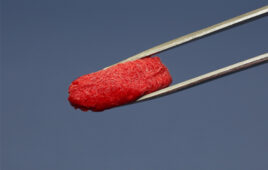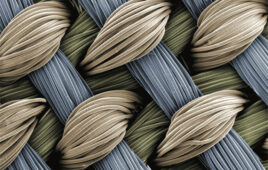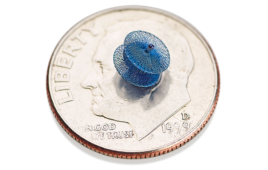Longeviti Neuro Solutions has launched its novel ClearFit implant to correct and/or restore bony voids or defects of the cranium. This clear, patient-specific implant enables neurosurgeons to see neuroanatomy and critical functional components beneath the ClearFit once it is implanted.
“The real advantage to this system is the ability to see what’s underneath the cranioplasty,” said Dr. Justin Caplan, assistant professor of neurosurgery with Johns Hopkins School of Medicine, in a statement from Longeviti. “Now instead of having to worry if there is blood accumulating putting pressure on the brain, the surgeon can see this directly right up until the wound is closed.”
ClearFit is made of polymethyl-methacrylate (PMMA), a biocompatible material with more than 40 years of proven clinical performance. Longeviti (Hunt Valley, Md.) uses a patient’s CT scans and a novel 3D-printing process to ensure a precise fit and restorative contour. In addition to providing surgeons a view of the neuroanatomy, ClearFit offers increased ultrasound visibility for post-operative monitoring. It received 510(k) clearance from the FDA in March 2018.
“The implants were great to work with and easy to customize on the table,” said Dr. Gabriel Santiago, neuroplastic surgeon and lieutenant commander of the U.S. Navy. “The ability to see through the clear implant at the anatomy underneath is a game-changer with regards to ensuring an epidural bleed is not occurring at the time of scalp closure.”
Neurosurgeons can order a ClearFit by uploading a CT scan to Longeviti’s secure file exchange, where a customizable design is proposed and completed. The company uses a proprietary process consisting of 3D-printing and CT scans converted to CAD/CAM to deliver a personalized implant for the patient.
Longeviti launched another product, InvisiShunt, at the 15th National Conference on Hydrocephalus in June 2018. InvisiShunt is a neurosurgical implant that is surgically placed in the cranium to restore its natural contour while maintaining its proper position. InvisiShunt uses high-density, porous, polyethylene material to allow the surgeon to safely and easily augment the device at the site of surgery to restore the natural contour of the cranium as well as minimize cosmetic abnormalities.
“For patients who require a cranioplasty as a result of trauma and/or restorative surgery, there is no one-size-fits-all treatment option,” said Jesse Christopher, co-founder & CEO of Longeviti. “Building on the recent launch of the InvisiShunt and our ‘first-in-human’ experiences published in several journals such as Operative Neurosurgery, Longeviti is proud to be able to offer patients innovative, customizable solutions for various neurological procedures.”
Cranioplasty procedures are indicated for correcting skull defects as well as providing enhanced cerebral protection, improving one’s appearance with reconstructive symmetry, and reversing “sunken flap” or Trephined syndrome. Historically, larger size-craniotomy and craniectomy patients have been at increased risk for bone flap-related complications including infectious osteomyelitis, sterile resorption, and/or visual deformities.





